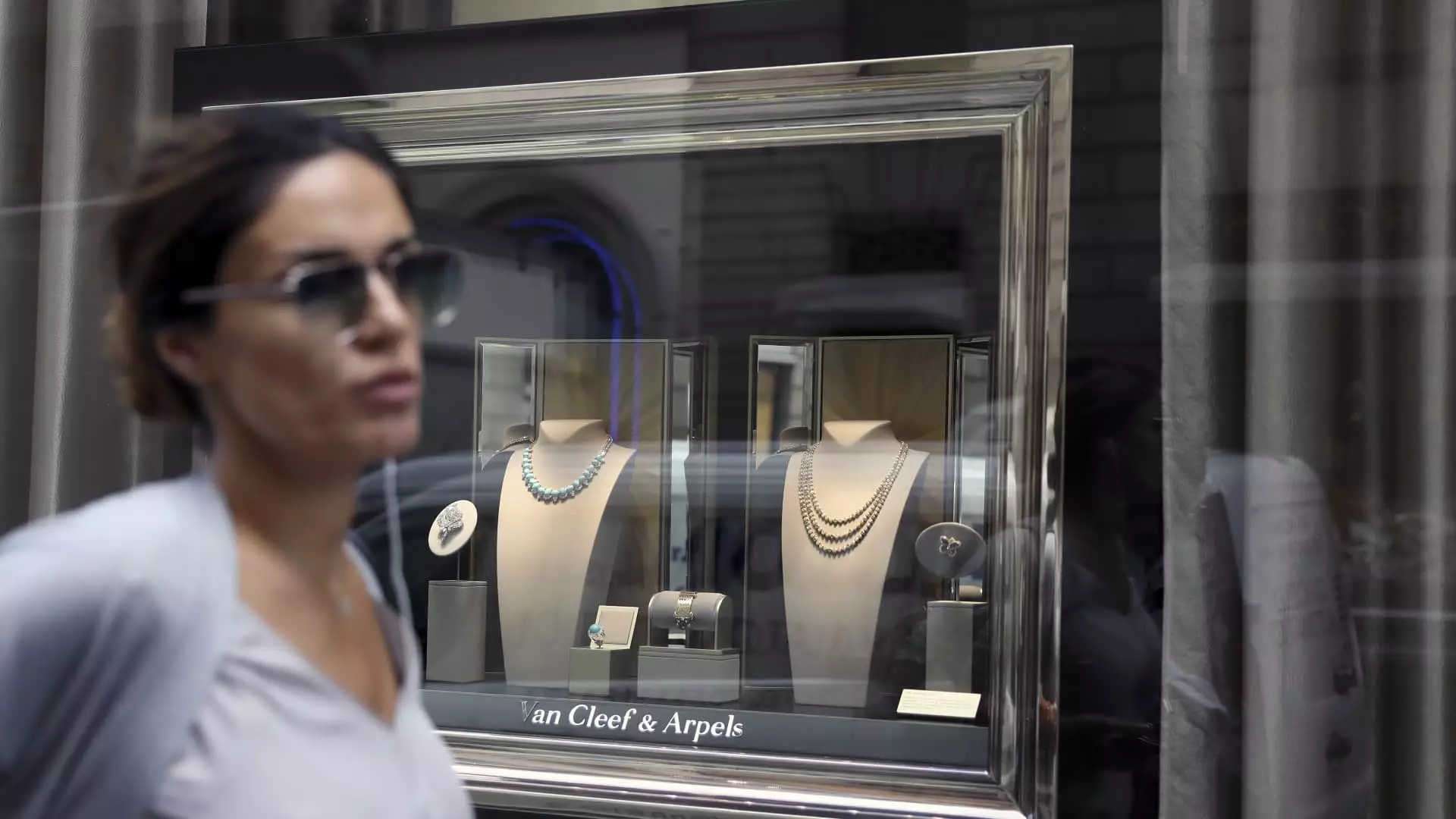As the world grapples with economic uncertainty, a stark divide continues to emerge: while the majority tighten their belts, the ultra-wealthy are still indulging in lavish displays of affluence. Ornate diamond rings and exclusive gemstone necklaces are no longer just adornments; they’re symbols of status that survive economic downturns. This obsession with high-end jewelry, notably amongst the elite, presents a more complex narrative about consumer behavior and the luxury market. While some may consider the purchase of extravagant items as frivolous, to others it’s a lifeline to identity—a clear reflection that, despite global crises, the affluent are insistent on distinguishing themselves in an uncomplicated world.
The changing dynamics in the luxury market reveal a troubling tendency—those who can spend are becoming increasingly selective. With a hailstorm of jewelry options available, brands such as Richemont, host to jewelry house titans like Cartier and Van Cleef & Arpels, find themselves at the pinnacle of desirability. As demand dwindles across the board for many luxury sectors, those with the means still demand not only the finest, but the rarest. To quote Luca Solca, a guiding voice in luxury insights, “Richemont’s jewelry brands are really at the top of consumer desirability,” illustrating a fierce brand loyalty that seems impervious to the economic malaise afflicting the wider consumer landscape.
Fortune Favors the Fearless
While Richemont has enjoyed an uptick in sales—an impressive 11% growth in its jewelry division—the overall luxury market is not without its pitfalls. Recent fiscal reports highlight a worrying trend: while brands like Richemont soar, their competitors are floundering. LVMH, an industry behemoth, reported stagnancy in its watch and jewelry divisions. Its struggles echo a broader crisis in the luxury sector, with firms like Kering and Burberry racing to manage expectations amidst dwindling sales. The stark contrast between Richemont’s success in jewelry and the stagnation felt elsewhere speaks volumes, underscoring how precariously fluid the market is. The “wealth effect,” where increases in luxury spending are directly correlated with economic growth, remains fragile—it relies heavily on consumer confidence.
Time Will Tell: The Watch Market Conundrum
Richemont’s difficulties with its watch segment serve as a potent reminder of the complicated face of luxury goods. With watch sales plummeting 13% in 2024, largely due to weaknesses in the critical Chinese market, it becomes evident that even the most storied luxury brands are not immune to economic pressures. The ostentatious nature of watches as timeless investments contrasts against jewelry, which has emerged as more than a luxury—it’s become a regular point of sale. Yet, the dynamics observed in the watch market are distinct; luxury timepieces had been perceived as long-term investments, whereas jewelry purchases frequently occur in response to immediate desires. It raises a crucial question—will the watch market bounce back, or will it languish as affluent consumers find more accessible options?
Luca Solca’s observation that “everybody and their dog has bought a watch out of Covid-19” illustrates the gluttony for watches during the pandemic’s isolated era. With saturation now presenting a challenge, long-held beliefs about the watch market being a surefire asset may not hold in this transformative landscape. A mixed future lies ahead for luxury watches, marred by excessive purchases in a contracted market where oversupply often erodes demand.
Richemont’s Balancing Act
Despite being the leading player in the jewelry market, Richemont faces looming challenges that threaten to tarnish its luster. Headwinds such as fluctuating gold prices, a robust Swiss franc against the dollar, and upcoming tariffs demand exceptional agility from the brand. Publicly making statements against price increases, Richemont’s leadership showcases a strategy aimed at sustainability, a stark contrast to competitors who might hike prices to counteract inflation or loss in margins.
The jewelry segment may indeed fortify Richemont against these broader market turmoil, yet to rely heavily on this segment for future growth also paints a precarious picture. The reality is that luxury is subjective; trends shift rapidly, and today’s desirable pieces may soon fade in importance. The allure of jewelry as a status symbol might not last if the luxury market fails to evolve.
In an industry defined by exquisite craftsmanship yet vulnerable to economic shifts, the psyche of consumers needs continuous nurturance. This delicate balance between particularity and accessibility will determine whether luxury brands remain relevant or risk becoming mere relics of an opulent past. The landscape is continually changing, and only time will reveal whether the jewel in the crown will continue to dazzle or ultimately fade into history.

